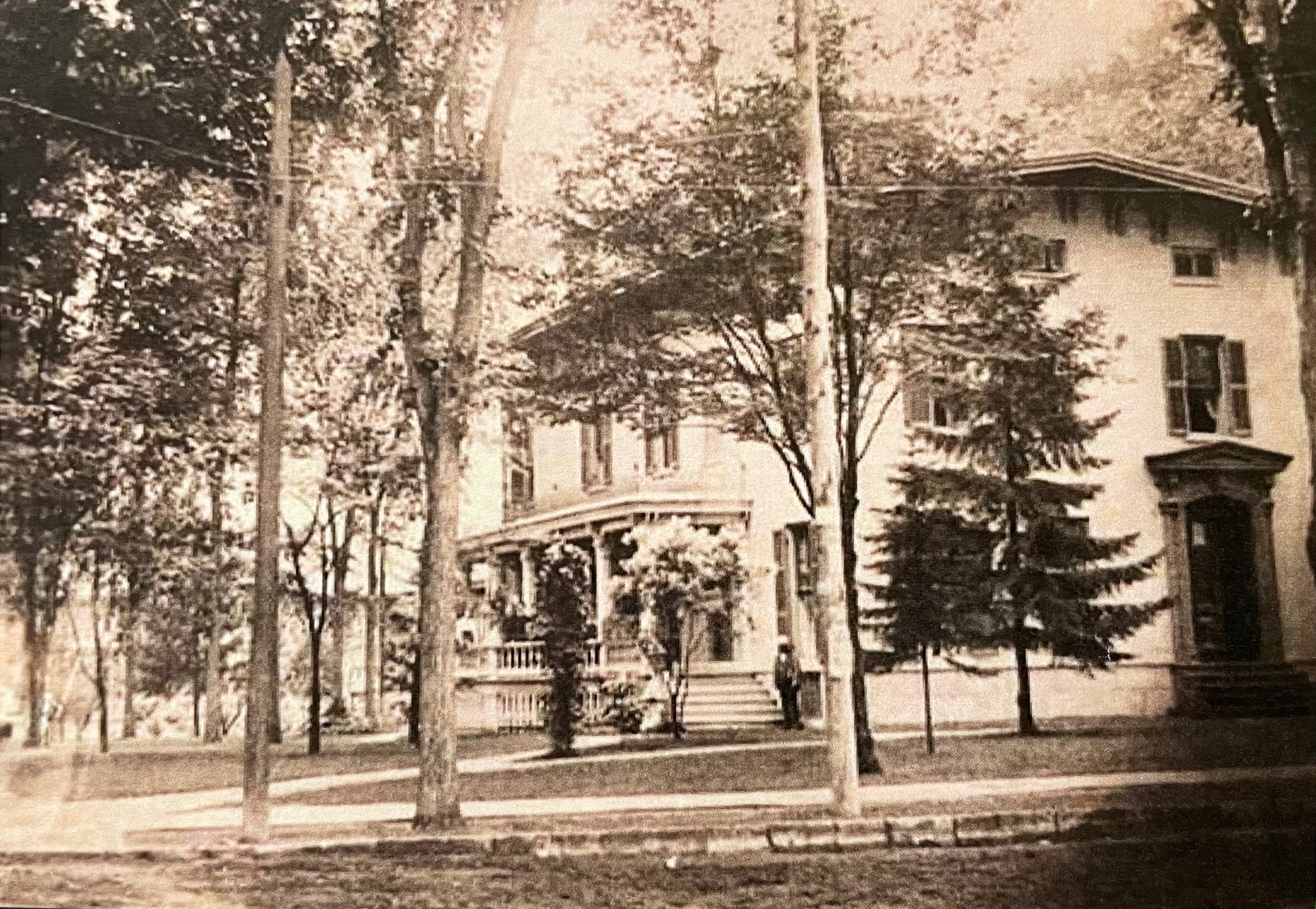Augustus Sherman of Glens Falls spent the last hours of his life doing what he loved best –negotiating a business deal.
“Yesterday morning he arose about half-past eight o’clock, apparently much improved in his condition. In fact, he remarked to his wife that he had not felt so well in several days,” The Morning Star of Glens Falls reported the day after Sherman’s Dec. 3, 1884 death. “About 9 o’clock, W.J. Reed, a prominent lumber man of Indian Lake, called at the house for the purpose of transacting some business with Mr. Sherman, and was shown to his room.”
Dr. R.J. Eddy, the family physician, was sent for a few minutes later, when Sherman complained of feeling ill, and the 83-year-old Sherman, reportedly the wealthiest man in Warren County, died at about 9:30 a.m.
Sherman had been at Potsdam, in Saint Lawrence County, checking on his saw mills there, for about a week previous when he developed a cold and had an asthma attack.
He returned to Glens Falls on Nov. 29, after stopping over in Albany to spend Thanksgiving with his daughter.
On Dec. 2, Sherman, who was president of First National Bank of Glens Falls, signed checks totaling $8,000, many of which were cashed the day that he died.
“Teller Pruyn says that the (bank) president’s signature was as perfect and legible as ever,” The Glens Falls Times reported. “The news was so unexpected that everyone received it with much surprise, and particulars of his untimely demise were eagerly sought for.”
Sherman’s long-time home, where he died, is now the Glens Falls Senior Citizens Center, at the corner of Glen Street and Sherman Avenue.
The Sherman House, as seen in this 1935 postcard
The building, constructed in 1859, was twice slated for demolition before a group of area residents including Harold Wakefield, Betty McAndrew and Robert Joy listed it on the National Register of Historic Places in 1977.
The senior center recently completed $500,000 of renovations and improvements to the mansion, an example of early Italianate Villa architectural style, as evidenced by its arched windows, shallow roof slopes, chimneys and a rooftop cupola.
Sherman supposedly had the cupola built so he could look out at all his vast real estate holdings in the region.
The Sherman House • Photo courtesy of Glens Falls Senior Center
Sherman, who had interests in lumber, forestland, lime, paper, banking, and more, left an estate of between $2 million and $3 million – the equivalent of between $55.5 million and $83.7 million in 2021 dollars.
He was regarded as the largest saw mill operator in the world, processing 33 million feet of lumber annually at his mills – three in the Glens Falls area, two at Potsdam, and one each at Ottawa and Black River in Canada.
He had been president of First National Bank since 1858, and held $100,000 in the bank’s stock at the time of his death.
Sherman was president of Glens Falls Paper Co. in South Glens Falls, president of Glens Falls Transportation Co., president of Sherman Lime Co., a director of Glens Falls Insurance Co., and had been partner with Frederick Johnson in a banking firm that was dissolved when Johnson, a Republican, was elected to Congress.
Sherman owned stock in First National Bank of Albany, Lapham & Co. grist mill, Bugg & Co. saw mills, slate quarries in Vermont, and an insurance company at Albany.
“His death has caused a vacancy in the business circles of northern New York which will be hard to fill,” The Argus, of Albany, reported.
Sherman was an important enough figure locally that, while he was still alive, the street next to his house, originally known as Hawkeye Street, was renamed Sherman Avenue.
It is believed he was the first person to own and operate canal boats on the Feeder Canal.
Sherman, born at Arlington, Vt. in 1801, was a direct descendant of Roger Sherman of Connecticut, who signed the Declaration of Independence and United States Constitution.
Augustus Sherman • Photo courtesy of Glens Falls Senior Center
Augustus Sherman was a self-made man.
“Early in life he learned the lessons of exhaustive, rough manual labor working with his father in the mingled pursuits of farming and lumbering,” wrote biographer Joseph E. Barnes.
At age five, he moved with his family to Kingsbury, and a few months later to Luzerne.
By age 15, Sherman was hauling horse loads of lumber to Albany by himself, and by age 19 he was operating his own lumber and grist mills.
“He had no educational advantages worthy of note, and, like the majority of men who have risen to prominence in the present century by diligence, shrewdness and an active brain, attended a country school for a limited period during winter months,” The Glens Falls Times reported.
Around 1840, Sherman sold his family holdings at Luzerne and moved to Glens Falls.
Sherman was an employer who led by example, Calvin W. Eaton, vice president of the Glens Falls Board of Lumber Dealers, wrote in a tribute a few days after Sherman died.
“Even in old age, he was not afraid of manual labor, always saying to his men, ‘Follow me,’ when he called them to any of the dangerous work required in rafting logs to the mills.”
—
Sources: The Morning Star, Glens Falls, Dec. 4, 5, 1884; The Glens Falls Times, Dec. 4, 1884; The Post-Star, April 9, 2017; The Argus, Albany, Dec. 4, 7, 1884; Courier and Freeman, Potsdam, Dec. 10, 1884; The Columbus Journal, Columbus, Nebraska, March 11, 1885; “Profiles in Banking,” Joseph E. Barnes, published 1990 by First National Bank of Glens Falls; biographical essay by Glens Falls City Historian Wayne Wright





